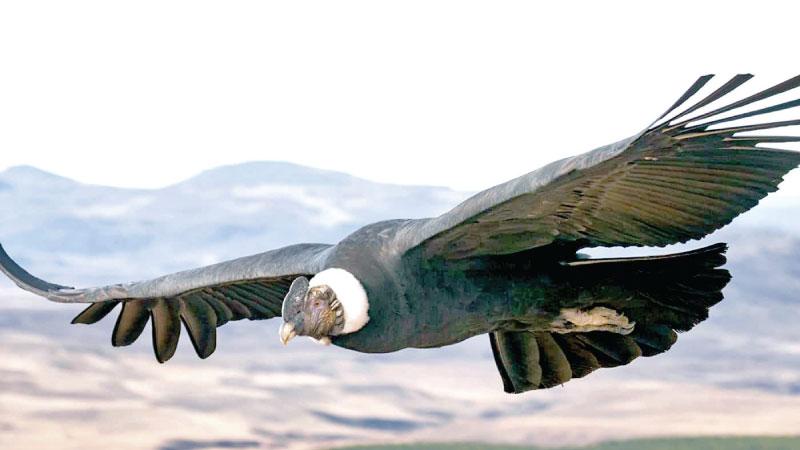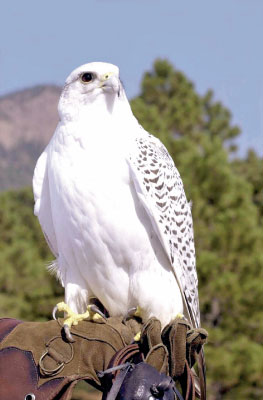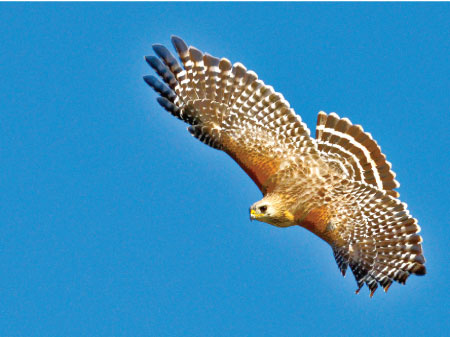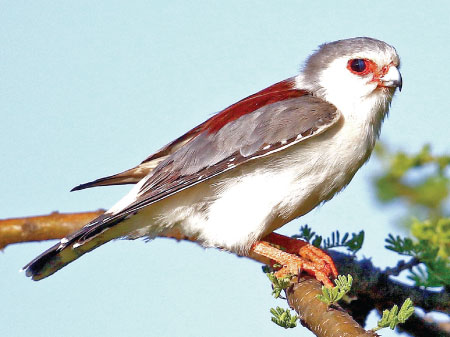
Falcons. A worldwide symbol of courage, aspiration and victory. Truly, these magnificent creatures, some of the fastest on Earth are the supreme hunters of the avian world—able to spot, chase and kill prey quietly, speedily and efficiently. They’ve given their name to one of the most renowned Marvel superheroes, and humans have relied on them for millennia as effective hunting partners.
Falcon
Found in all continents of the world except Antarctica, falcons have a huge diversity in both physiology and hunting behaviour.
The gyrfalcon is nearly 65 centimetres long, whereas the pygmy falcon measures a measly 20 cm. The peregrine is renowned for its speed, reaching over 320 km/h (200 mph) during its characteristic high-speed dive, making it the fastest bird in the world, as well as the fastest member of the animal kingdom.
Falconry, popular especially among the upper-classes in the Middle-East and Europe, is the sport of hunting wild animals using birds of prey, predominantly falcons and hawks.
 There is a magnificent museum dedicated solely to falcons. The Falcon and Heritage Sports Centre in Dubai, offers visitors an enriching experience where they can learn about the symbolic importance of the majestic avian.
There is a magnificent museum dedicated solely to falcons. The Falcon and Heritage Sports Centre in Dubai, offers visitors an enriching experience where they can learn about the symbolic importance of the majestic avian.
Hawks
Hawks are among some of the most intelligent birds in the world. The hawk‘s broad rounded wings and long tail, helps it take prey by surprise with a short chase. They have almost 50 times the photoreceptors in their eyes compared to that of humans (1,000,000 to 20,000). The largest hawk in the world, the ferruginous hawk, has a length of almost 70 cm and weighs between one and two kilograms.
A red-shouldered hawk
Although the hawk is known for being a violent predator, some are gentle and quiet. When flying, it flaps its wings rapidly, and then uses that momentum to glide smoothly and gracefully through the air. Like most birds, the hawk migrates in the Autumn and the Spring. Different types choose separate times in each season to migrate. The Autumn migrating season begins in August and ends mid-December.
Hawks are strong, powerful birds. Their feet are equipped with sharp, curved talons for capturing prey, and their strong beaks are hooked for biting and tearing flesh. Swift fliers, some hawks can attain speeds of over 250 kmph (150 mph) when diving. Some species undertake long migrational journeys, travelling thousands of miles each year – a testimony to their strength and stamina. Their sense of hearing is excellent, and their sight the best in the entire animal world. Not only can hawks see greater distances than humans, but their visual acuity (the ability to see clearly) is eight times that of ours.
Their diet includes a variety of smaller animals.
Some of these small animals include snakes, lizards, fish, mice, rabbits, squirrels, birds, andany other type of small game that is found on the ground.
Eagles
Eagles are some of the largest birds of prey found around the world. They have excellent sight, owed in part to its sizeable eyes which can take up around 50 percent of the head, as well as powerful talons which help them to catch prey. There are over 60 different species of eagle. This bird has long been considered ‘The King of Birds’, and in many countries, the eagle is thought to bring good luck, which is one reason it has been featured on various national flags.
 Flight
Flight
Eagles normally build their nests, called eyries, on tall trees or on high cliffs. Many species lay two eggs, but the older, larger chick frequently kills its younger sibling once it has hatched. The dominant chick tends to be a female, as they are bigger than the male. The parents take no action to stop the killing.
Eagles are an exceptionally symbolic, being considered the ‘King of Birds’ in contrast to the lion, the ‘King of Beasts’ They are particularly popular in Germanic countries such as Austria, due to their association with the Holy Roman Empire.
One of the most famous is the bald eagle, the national bird of the USA. Golden eagles, the most common species, are much more ambitious than other avian predators in selecting their prey; they have been known to hunt foxes, wild cats and even young deer and goats.
Condors
Condors, the largest flying land birds in the Western hemisphere, have a staggering wingspan of almost three metres and weigh almost 15 kilograms. Mostly found in the North and South American continents, condors are believed to have lived in the Pleistocene era (2,500,000 – 11,000 years ago). These vultures can be divided into two species; the Andean and California condors.
Condor
The Andean is typically five cm shorter than the Californian condor, but heavier and larger in terms of wingspan. Both species of condor flap their wings only one percent of the time during a flight. They can soar more than 100 miles (160 km) without flapping its wings.
 Adults are black with striking white patches under the wings. The naked head and neck are yellowish orange.
Adults are black with striking white patches under the wings. The naked head and neck are yellowish orange.
Immature condors have dark heads, grayer necks, and mottled grayish instead of clear white patches under the wings. Adult colouration is reached at six -eight years of age. Wild condors inhabit large territories, often travelling 250 kilometres (150 mi) a day in search of carrion (animals already killed by other predators). They prefer to feast on large, terrestrial mammalian carcasses such as deer, goats, sheep, donkeys, horses, pigs, mountain lions, bears, or cattle. They may also feed on the bodies of smaller mammals, such as rabbits or coyotes, aquatic mammals such as whales and sea lions, or salmon.
Dinara Hettiarachchi,
Grade 9
Ananda College
Colombo 10
